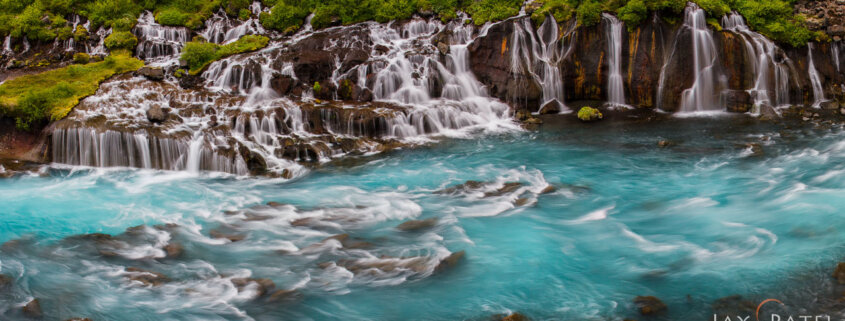Landscape Photography – 5 Takeaways from Photos that Sell
We do not actively promote our landscape photography prints on Visual Wilderness. However, we do sell several thousand dollars worth of fine art prints through our website every year. So this year when we Jay was contacted by Weingarten, he was not surprised by the images that they selected for their 2018 Fine Arts calendar titled “The Earth”.
Here are five take-aways regarding which landscape photos have been sold as prints or licensed by magazines or calendars.
#1 – Clients do NOT care what camera and lens you use
As landscape photographers, we love to engage in endless debates about the latest and greatest equipment. Some of us even memorize the specs on every new camera and lenses produced in the last five years. And who among us is not tempted to spend that extra bonus we got on the newest equipment?
In all the years we have worked with a variety of clients, not a single client has ever asked about the camera and lens I use for my landscape photography. This is true for this calendar project as well. Two of the images chose by the client were taken with… drum role please… an 8.2 MP Canon 20D Digital SLR with max resolution of 3504 x 2336 pixels. ;)
When a customer looks at this calendar, he or she would be hard-pressed to tell which images were taken with 8.2 MPixel camera.
#2 – Golden hour prints make up a small percentage of total sales
I love to shoot dramatic light during the golden hours… especially when there is a passing storm system. After all, who wouldn’t like to see landscape photos like the one below?

Landscape photography example of manual exposure blending in Photoshop – Glacier National Park, Montana
The photo with magnificent light are the ones that gets the 1000s of clicks and 100s of shares on the social media and drive my ego into the stratosphere. And almost every landscape photography book will tell you that the best images are the ones you can get during golden hours. Considering this type of advice, I have known many photographers who seldom shoot anything during daylight hours.
This approach of shooting only during golden hours is a big mistake if you are in business of photography selling your landscape photos. Only 4 of 12 landscape photos that make up this calendar were taken during the golden hours. The rest of the landscape photos were during daylight hours and some even under blue sky conditions with harsh light.
#3 – Surreal post-processing is not always necessary
We love to see dark, moody, surreal images on social media. They are sure to grab your attention. We have also talked to many students who want to learn how to create surreal photos using specialized post-processing techniques. Although I have seen these surreal images being used in calendars and fine art productions, this is NOT the only avenue to sell your landscape photography prints.
I enjoy landscape photography because I love the stunning beauty that you find in nature. And this is what I most wish to show my viewers. So, I am less inclined to use surreal post processing techniques to create drama and mood for the my own landscape photos. I prefer my images to be vibrant and retain their natural looks as much as possible. Over the years, we have build a highly successful landscape photography business following this philosophy.
#4 – Clients should be able to search for your images using keywords
Lets face it… no one is going to purchase your landscape photos if they cannot find them. This is particularly true if you are in business of photography and if you have a large collection of landscape photos. Between Varina and myself, we have several hundred images on our websites; each one of these images is key worded and searchable. If you go to my gallery at photos.jaypatelphotography.com you can search using keywords like country, state, terrain features (such as waterfalls, mountains, lakes), seasons, and more. This makes it extremely easy for our clients to find images on our websites, especially if they are looking for a specific type of landscape photos.
#5 – Your camera skills are still important
You can see exquisite details, colors, and sharpness in all the photos chosen by for the Wiengarten calendar. The work of capturing great landscape photos starts with your camera skills. Some of the techniques used for these photos include hyperfocal distance, automated bracketing, manual bracketing, selecting the correct shutter speed, using histogram to determine the ideal exposure, and more. Getting it right in-camera requires field work as well as a good dose of creativity.
Even a simple photo like the one you see above was created using two different camera exposure. These camera exposure were not used to extend dynamic range; they were used to capture different details in different parts of the images as seen in images #2 and #3. We highly encourage our student to abandon the “I will fix it in Photoshop later” attitude and develop camera skills and creativity to capture what they envision.
The next time you want to create landscape photos that sell, look beyond golden hours or limitation of your equipment. Instead, focus on developing your camera skills and creativity to capture stunning photos. Feel free to share the lessons learned about business of photography in the comments below.











 Grant Collier
Grant Collier




I keep asking myself the same question. Thank you so much for the insight…
Great little article. We discuss this on my podcast a lot. I think there’s an interesting difference between what people buy and what we all want to shoot, and if you’re lucky, sometimes those two overlap.